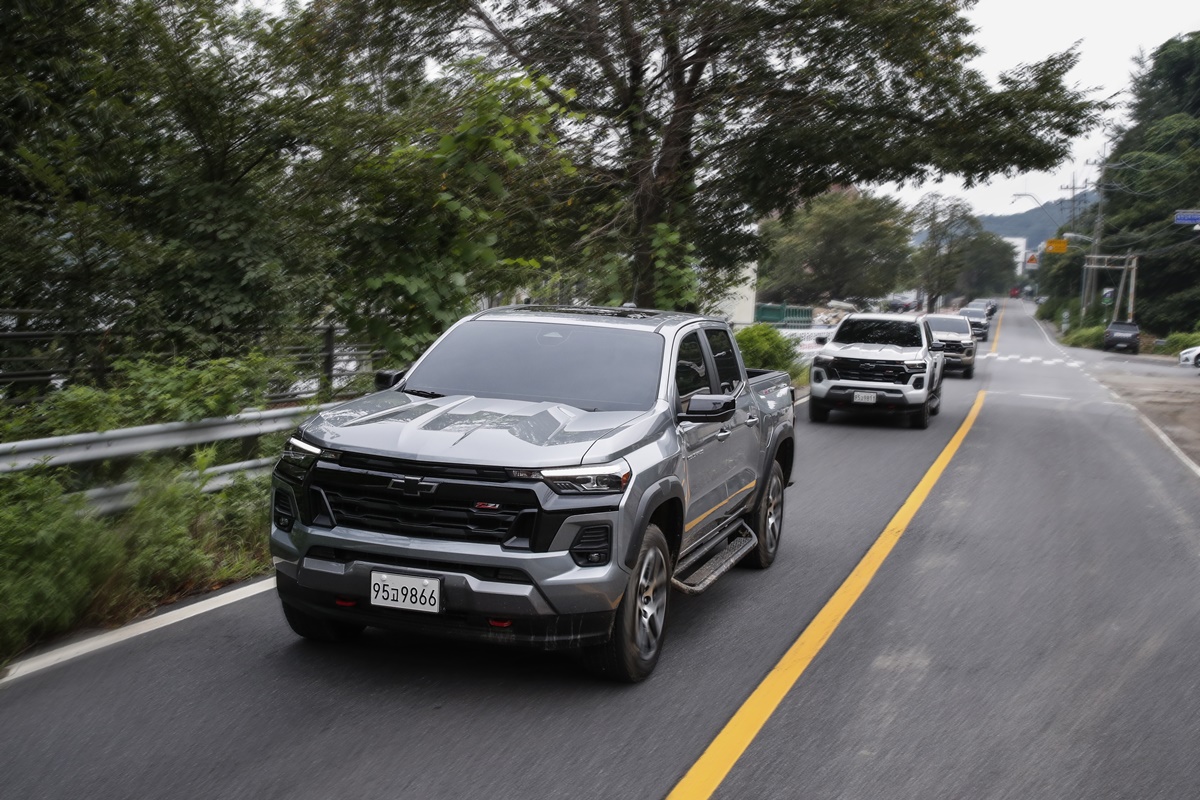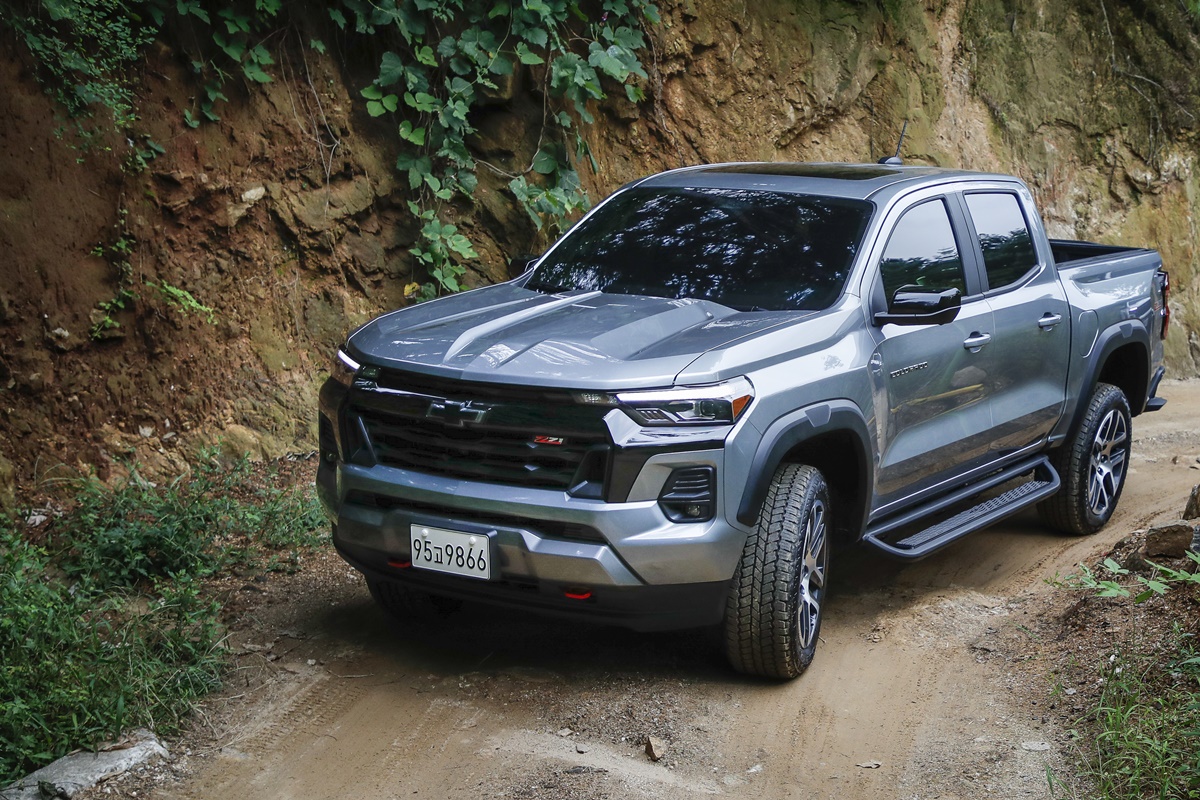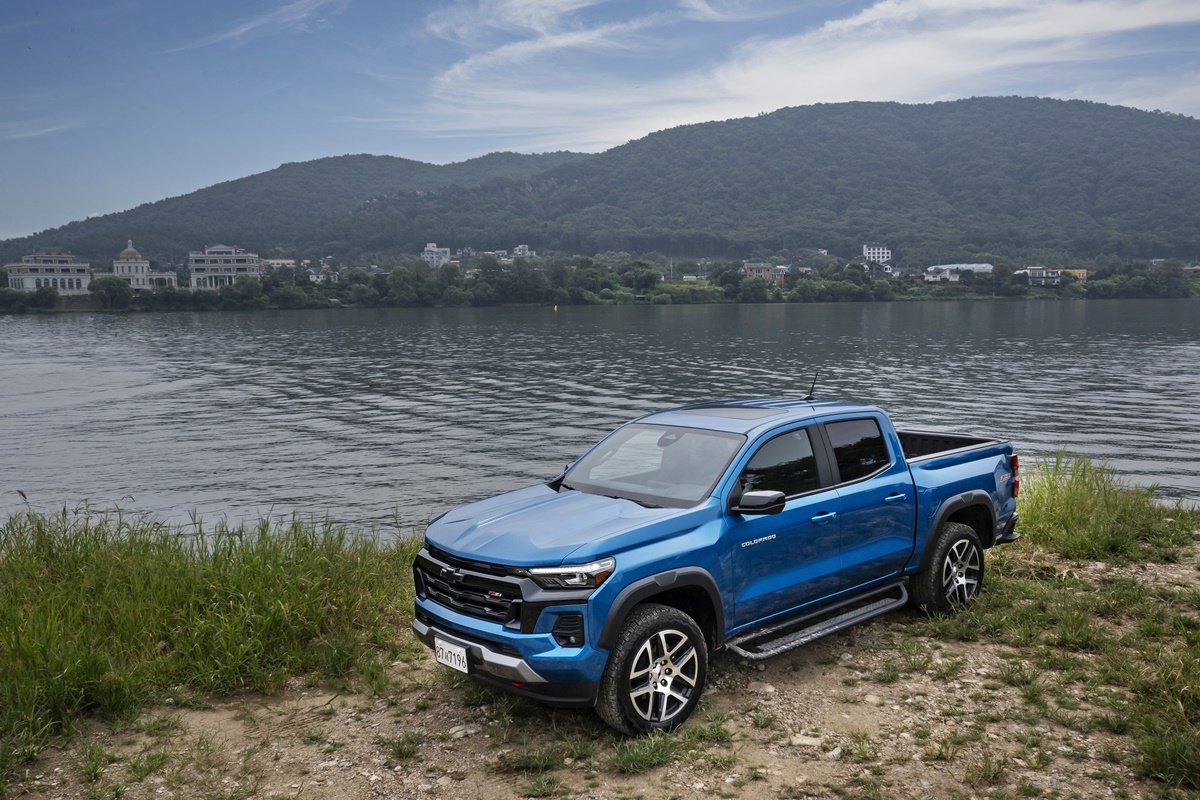
This is the third generation Colorado, which has undergone a full makeover. This model goes beyond the traditional pickup truck realm by adding various features. The first thing that stands out is the price. The 2022 Colorado Z71 started at ₩47,390,000, but with the new model, it skyrocketed to ₩73,000,000. While the enhancements in market competitiveness are significant, and the elevated dollar exchange rate played a role, the sudden jump in price is surprising. Another remarkable thing is the news of the initial stock being sold out completely. It’s surprising to see such demand even with the increased price.
Coming from the US, the heart of pickup trucks, the Colorado is a true American pickup. With dimensions of 5,410×1,810×1,905mm and a wheelbase of 3,337mm, it has a considerable presence. By Chevrolet’s standards, it falls into the mid-size pickup category, with the full-size Silverado above it, emphasizing the robust tradition of American pickups.

Its design has undergone significant changes. All types of lamps are now LED, including the headlights, daytime running lights, fog lights, and taillights. The black radiator grille and LED projection headlights give it a bold presence. The side body lines are finished with sharp straight lines, and the rear wheel wells are crafted with added volume for a more three-dimensional appearance. The door panels have a waistline that dips in, emphasizing the innovative design. The body lines genuinely come to life around the wheel wells.
Once you step inside, the spacious monitor catches your eye first. The 11.3-inch touchscreen controls many functions. While there is a trend towards minimizing buttons, Colorado holds firm with a multitude of buttons that ensure intuitive operation rather than following fads.
The steering wheel and dashboard feature red stitching for a touch of luxury. The steering wheel does 3.2 turns, accommodating the larger size for a more relaxed lock-to-lock ratio, which proves beneficial when off-roading.

The dashboard is fitted with an 11-inch color digital cluster. It can display a wealth of information or a simple screen according to preference. Off-road information can also be presented, effectively aiding navigation on rugged paths. The options are extensive.
A round lever is provided to select driving modes, with the top section used to select the drive system. Options include 2H, 4H, and Auto, but you must first select neutral in order to choose 4L. The presence of 4L suggests it is aimed at more intense off-road performances, a standard feature for American pickups. Additionally, it comes equipped with devices and features that facilitate trailer connections.
The second-row space allows for nearly a fistful of space in front of the knee. There’s ample storage under the seats for emergency triangles, jack tools, and other essentials, enhancing spatial efficiency. The window can be lowered with a single button press but must be held down for it to fully close.

The powertrain has been completely revamped. The 3.6-liter naturally aspirated engine from the second-generation model has been replaced with a 2.7-liter turbo engine with direct injection. The output now stands at 314.3 horsepower, considerably stronger than before, with maximum torque also up to 54.0 kgm. This engine was previously used in the upper-tier full-size Silverado. An 8-speed automatic transmission is responsible for managing that power.
At a speed of 100 km/h, the RPM hits 2,000, which is higher than expected. Third gear marks 4,000 RPM, indicating that the power is being utilized at a higher range. This tuning seems to focus on performance, akin to a score with rounded tones favoring performance.
However, the trade-off comes with fuel efficiency, registering at 8.1 km/L. Considering the large size and heavy weight, this mileage is somewhat justifiable, but one wonders if a more efficiently set 8-speed automatic could yield better numbers.

With a curb weight of 2,150 kg, this calculates to a weight-to-power ratio of 6.84 kg per horsepower. So, it’s reasonable to expect it could reach 100 km/h in around 7 seconds. While acceleration is not the primary focus for a pickup truck, it is still well-suited for chasing villains in action movies.
Including basic driving modes, it offers four drive modes: off-road, rough terrain, and towing/loading options. Four-wheel drive is standard, featuring AutoTrack active 2-speed 4WD, with options for Auto, 2H, 4H, and 4L. The addition of differential lock functionality allows for locking the differential when traction differences left to right become severe, enhancing performance on rugged terrains.

You can get closer to nature with it. It can reach the most secluded places accessible by car, going deeper than SUVs and equipped with a four-wheel drive system that far surpasses 2WD. Plus, with the addition of 4L mode, it can navigate rough terrain effortlessly.
Operating a pickup truck comes without the burden of concern. Luxury SUVs that cost over a hundred million won find it challenging to handle rough terrains. True, they perform incredibly well, but the repair costs can be daunting. The economic burden of repairing a luxury SUV after an off-road incident is a crucial factor. Certainly, pickups offer far less financial concern compared to luxury SUVs.
The third-generation All-New Colorado is sold in South Korea exclusively in the Z71 trim for ₩72,790,000.

Direct and to the Point with Oh Jong-hoon
There’s no built-in navigation system. Instead, it relies on integration with smartphones through Android Auto or Apple CarPlay. This is surprising for a premium pickup truck in the ₩70 million range, where the features feel quite sparse.
The driving assistance system does not include a lane-keeping assist but is only limited to lane departure warnings. It often triggers warnings when turning corners. It seems they need to elevate the level of the driving assistance systems.
Oh Jong-hoon yes@autodiary.kr

